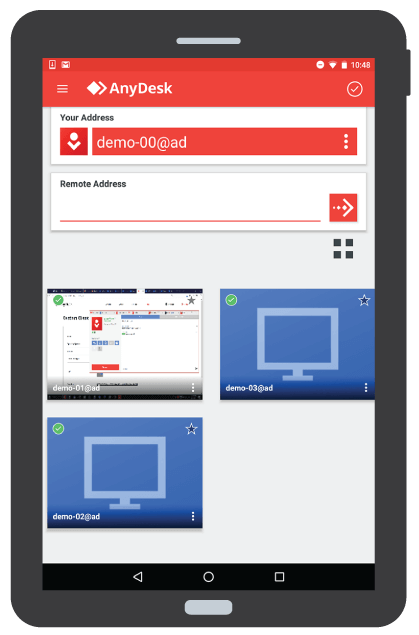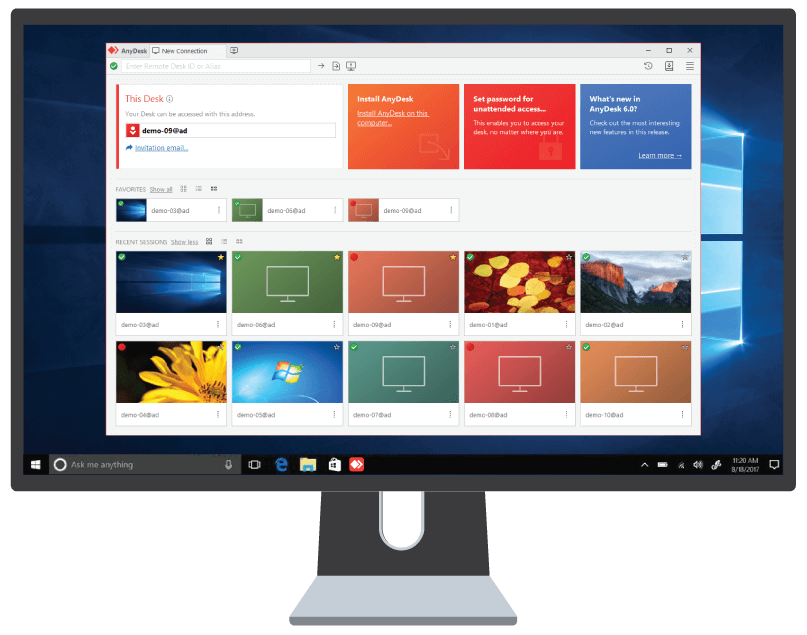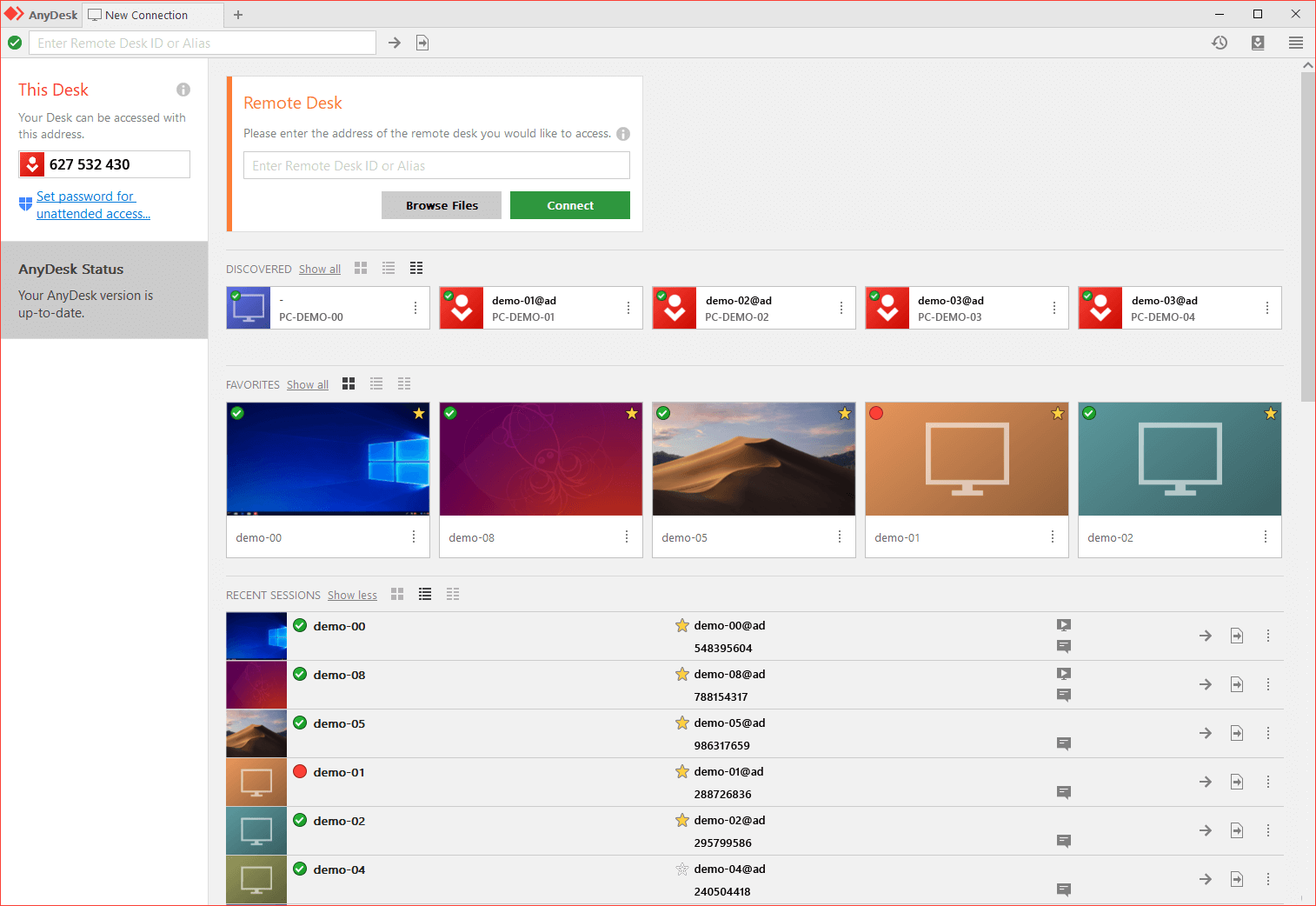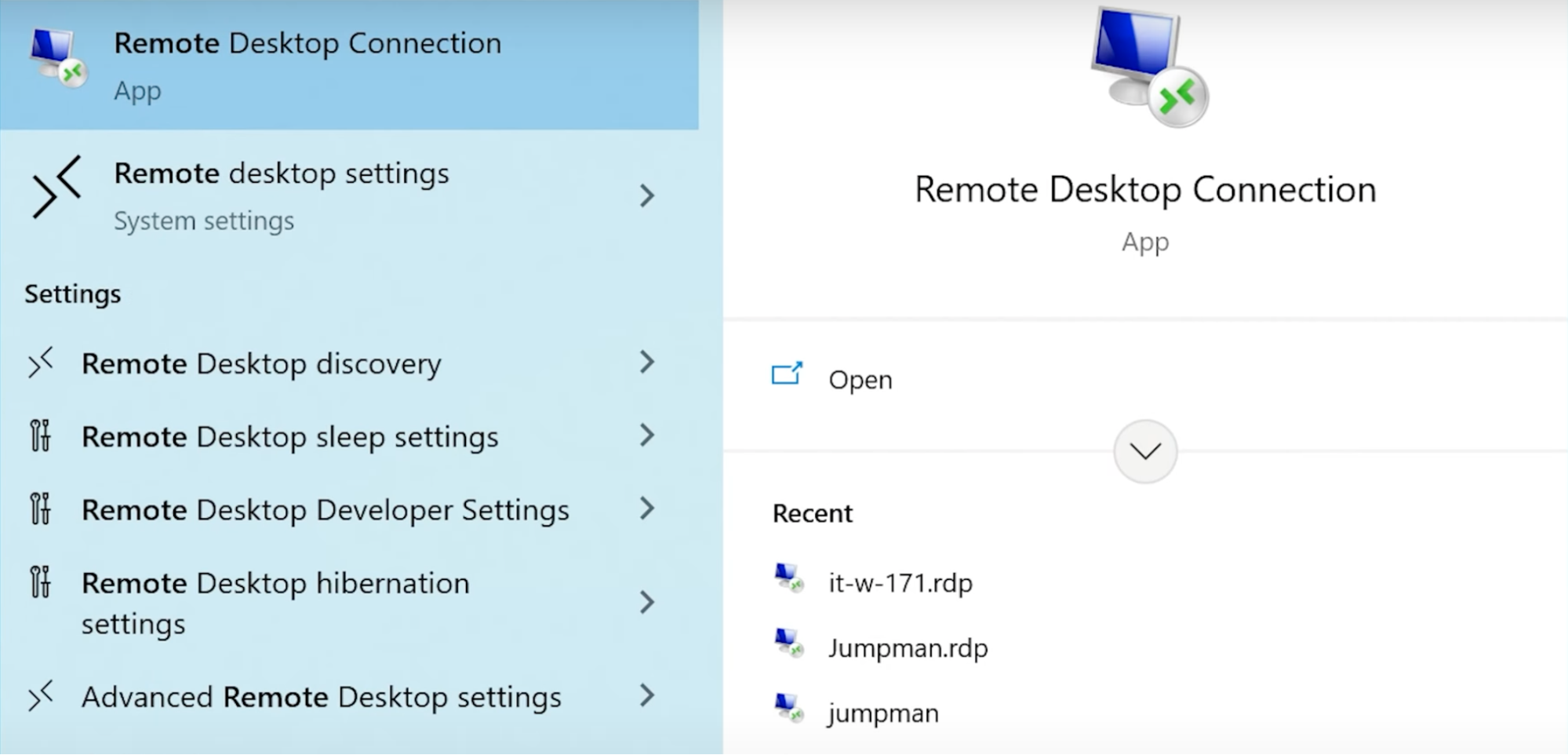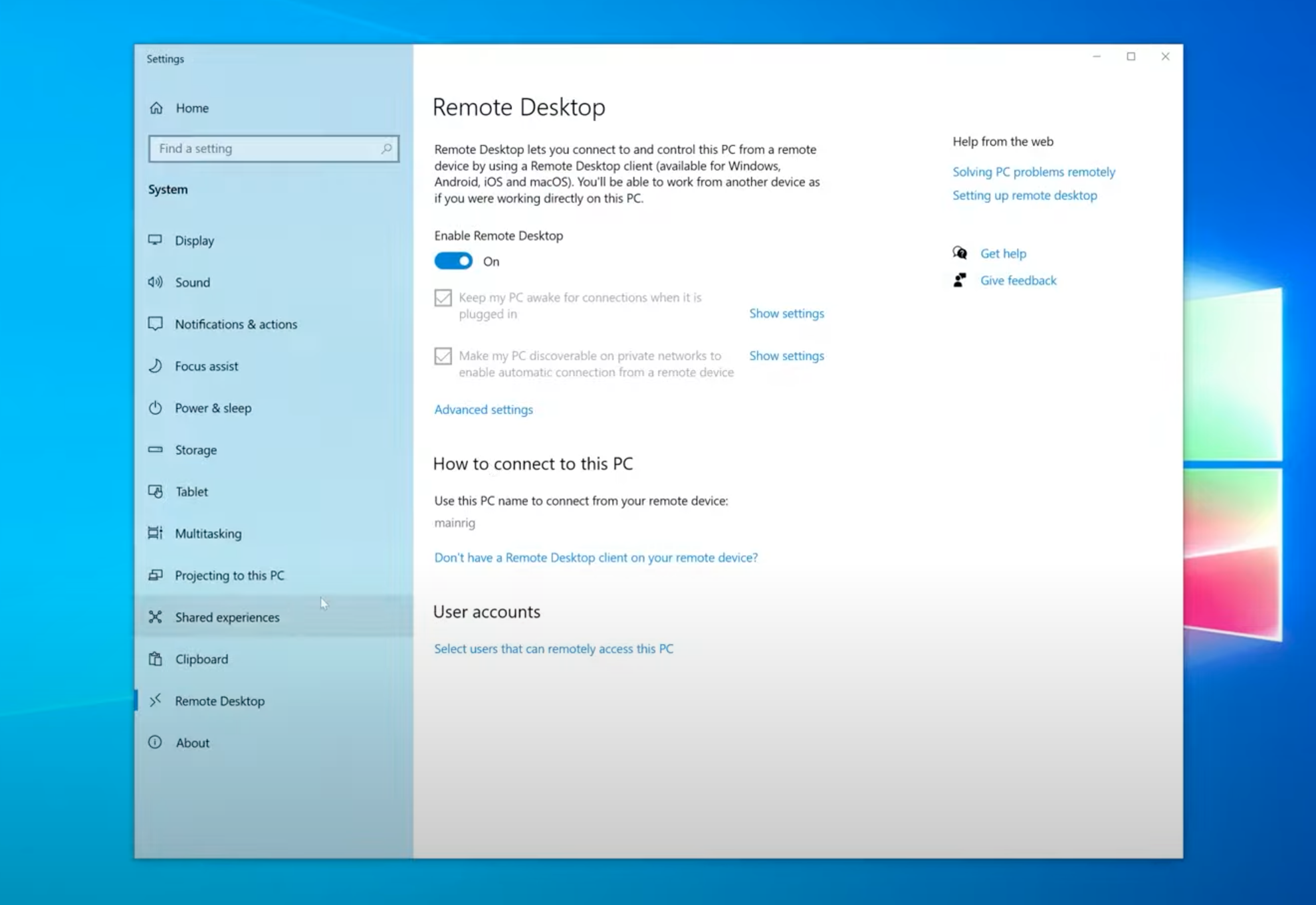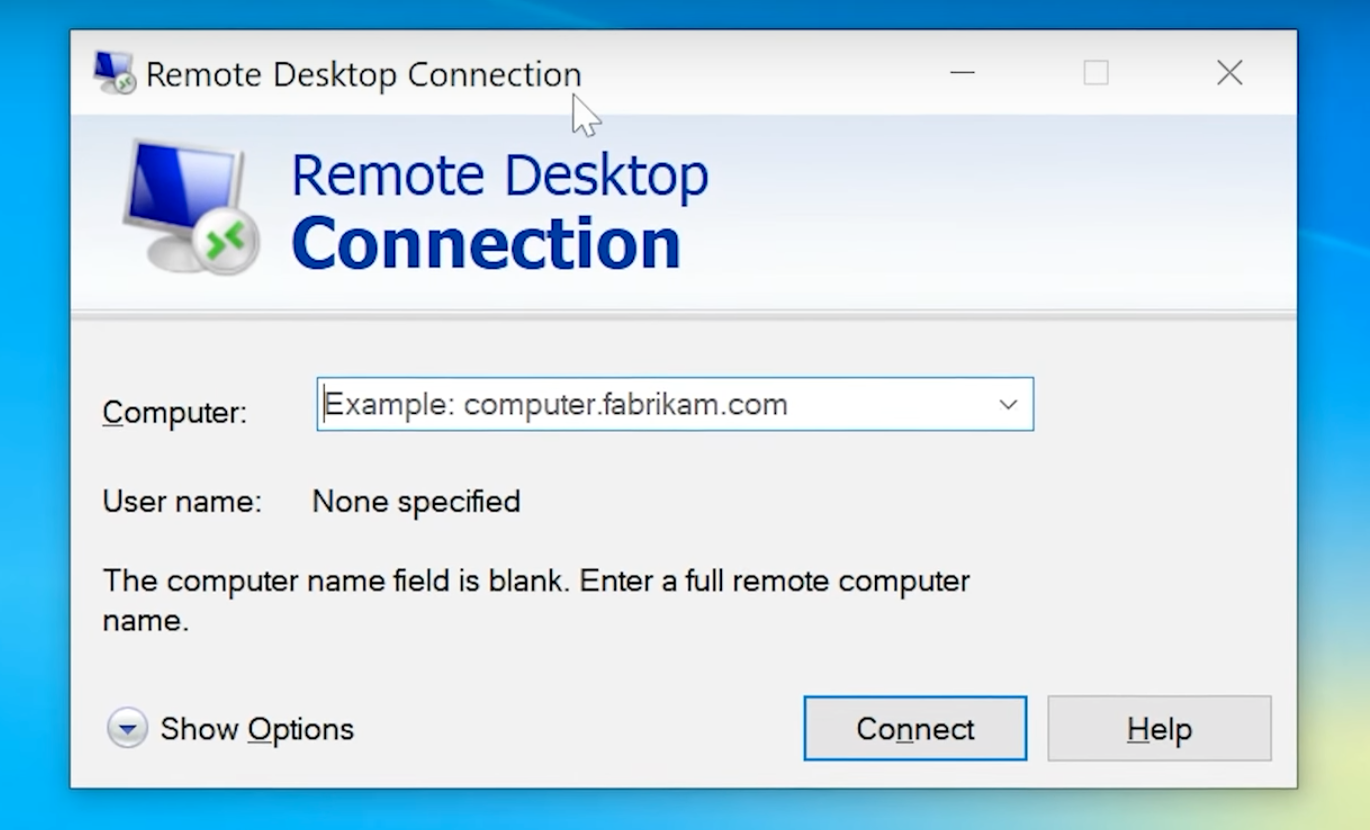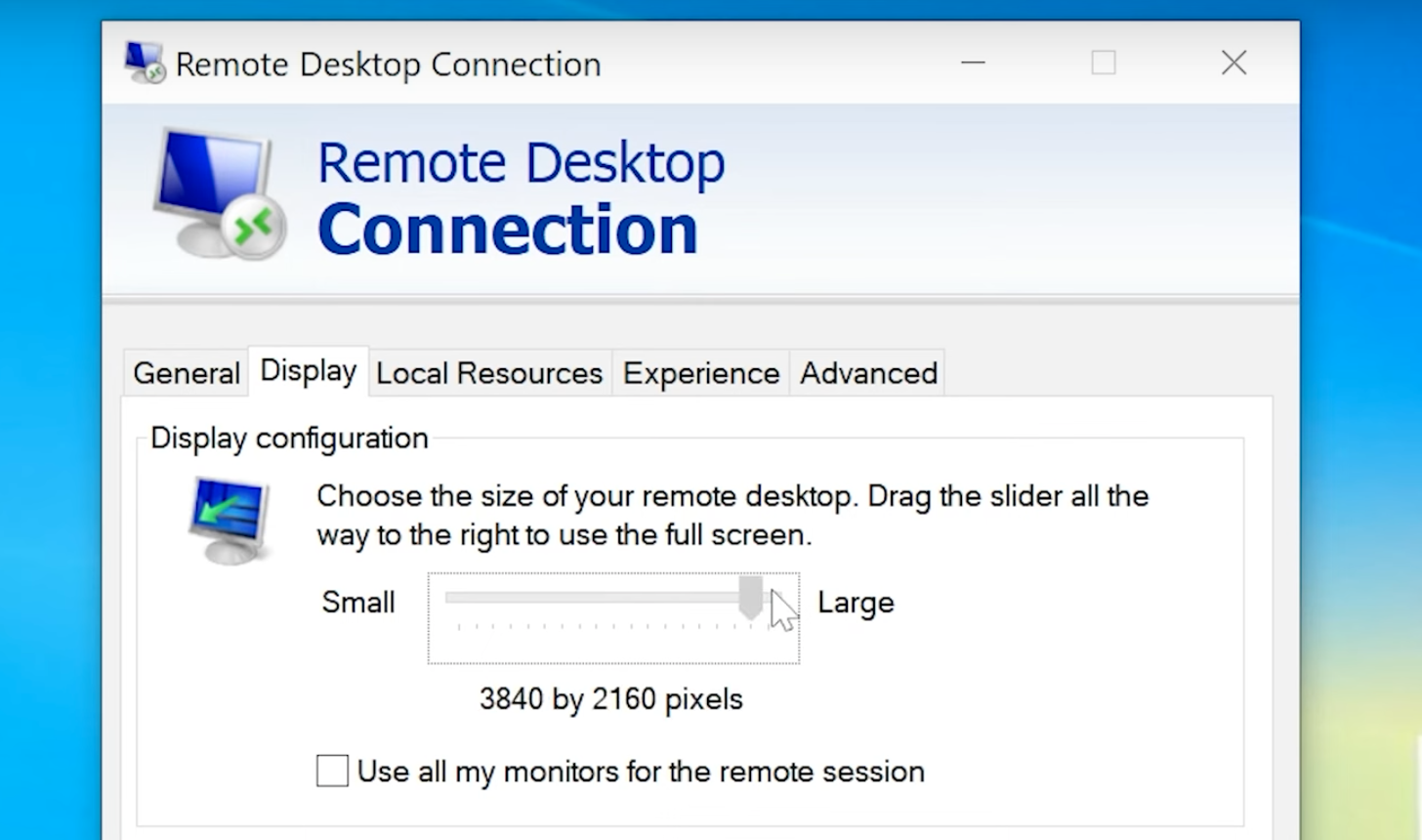Remote Desktop Protocol vs AnyDesk: Thorough Comparison
Remote access software is an essential solution for individuals or organizations who need to manage and access remotely located computers. Many remote access tools are on the market with different features that appeal to various audiences. This article looks at the differences between RDP and AnyDesk to help you select the right one for your situation.
Overview
That being said, Remote Desktop Connection (RDC) is built into Windows. So, it will remain available for Windows-to-Windows connections or remote desktop connections. But RDC has certain limitations, such as complex configurations and a lack of cross-platform support. This is why many users are now looking for alternative remote desktop solutions that are more suitable for their needs.
If you’re in the same boat, consider using HelpWire. It’s a free remote desktop software solution that you can set up and use easily. Benefit from its useful features and cross-platform support for macOS, Linux, and Windows.

Remote Desktop Protocol (RDP) is a Microsoft-developed protocol that enables remote access to a computer’s desktop over a network. While RDP itself is the underlying technology, it’s often used to refer to the Windows Remote Desktop Connection (RDC) application, available in Windows Pro and Enterprise editions. RDC allows users to access a remote desktop, use applications, and transfer files as if they were physically present. Primarily designed for Windows-to-Windows connections, RDP is a secure and efficient tool for IT administrators and businesses managing Windows devices.
AnyDesk is an alternative to Microsoft’s RDP. It is proprietary software that is compatible with all the common operating systems. AnyDesk is free to use for private users. To connect remotely, both computers need to download and run AnyDesk. When you launch AnyDesk – it will show you that computer’s Personal ID. Share that ID with the person you want to grant access to your machine. AnyDesk allows you to share keyboard and mouse access as well as screenshots of the desktop. While there are other similar products available on the market, AnyDesk outperforms these with the speed at which it runs.
Best Use Cases
Remote Desktop Protocol
Microsoft’s RDP is ideal for IT environments where Windows-to-Windows remote access is required. Some of the use cases can be:
- • Organizations with Windows-based infrastructure that want a built-in remote access tool without investing extra
- • IT administrators in corporations are tasked with managing Windows-based desktops and servers while keeping security in check.
- • Scenarios where performance and security are paramount, and users can handle more complex network configurations.
- • Users wanting to remotely access office PCs with a Windows Pro or Enterprise license.
AnyDesk
Unlike RDP, AnyDesk is compatible with multiple platforms. This makes it ideal for businesses that operate in a cross-platform IT ecosystem and need an easy-to-use remote access solution. AnyDesk is useful for:
- • IT support teams that deliver remote assistance across multiple operating systems – mobile devices, macOS, Linux, and Windows.
- • Businesses that want to gain unattended access to remote devices without complicated configurations.
- • IT environments that need minimal network setup and firewall traversal.
- • Technical consultants and technicians who want a solution for on-the-go remote access.
- • Other users who need fast and on-demand support sessions with native communication tools, such as chat, video, and VoIP.
Features
Remote Desktop Protocol
Remote Desktop Protocol (RDP) allows you to access and control Windows computers remotely with ease and security. It’s included in Microsoft’s Windows Pro and Enterprise editions. Let’s talk about its features:
- • Easy access: RDP enables seamless connection to remote Windows computers and servers, offering full control.
- • File transfer: Securely transfer files between local and remote machines during a session.
- • Multi-session management: Administrators can manage multiple sessions, set up virtual desktops, and publish RemoteApp programs.
- • Remote printing: Print from a remote computer to your local printer.
- • Session persistence: Keep remote machines “awake” and ready for connection.
- • Strong security: Built on Windows security protocols, RDP supports encrypted connections and can use network-level authentication for added protection.
AnyDesk
AnyDesk is an efficient and lightweight remote desktop solution. It offers cross-platform compatibility and secure remote connections. Let’s discuss its main features:
- • Cross-platform support: AnyDesk works across Windows, macOS, Linux, Android, and iOS.
- • High-performance: Enjoy low-latency connections and efficient bandwidth usage for smooth remote sessions.
- • Session recording: Record remote sessions for training or auditing.
- • Unattended access: Secure remote access without requiring a user’s presence.
- • Remote printing: Print documents directly to your local printer from a remote computer.
- • File transfer: Easily transfer files between remote and local machines by dragging and dropping.
- • Security: AnyDesk uses TLS 1.2 encryption and RSA 2048 key exchange for secure connections.
| Feature | RDP | AnyDesk |
|---|---|---|
| File Transfer | ||
| Record Sessions | (Windows only) | |
| Audio Support | ||
| Transfer of Sessions | ||
| Remote Printing | ||
| USB Sharing | ||
| Realtime Chat | ||
| Mobile Access |
Interface Comparison
AnyDesk provides an intuitive, user-friendly interface with easy controls for remote access and file sharing, making it perfect for quick support and non-technical users. In contrast, RDP offers a full Windows desktop experience with a more streamlined, functional interface, making it better suited for professional or long-term use in Windows environments.
Operating Systems
Either of these two tools is compatible with multiple operating systems.
| Role | Operating Systems | Microsoft RDP | AnyDesk |
|---|---|---|---|
| Host | Windows 10/11 Pro, Enterprise, Server | ||
| Windows Home | |||
| Client | Windows, macOS | ||
| iOS, Android | (via app) | (via app) | |
| Linux | (3rd-party clients) |
Pros and Cons
The pros and cons of Microsoft RDP and AnyDesk are outlined in the following tables. We think this will help you compare their features with LogMeIn and SplashTop and make the correct purchasing decision.
RDP
Pros
- By using the remote server’s resources to run applications, a high-speed internet connection is not required.
- With RDP you are not limited to the type of device you choose to connect from.
- Monitor and control connected devices with ease
- Access files and folders easily
- Hassle-free troubleshooting
Cons
- Advanced configuration required to setup a remote connection
- Networks and remote systems are not accessible during downtime
- It’s an expensive and complicated set up for multi-user environments
- You can not reboot a computer remotely with RDP
- May require additional third-party tools
- If multiple users are accessing a computer simultaneously, resource bottlenecks may occur.
- Only compatible with Windows devices
AnyDesk
Pros
- Download file is only 3MB
- Fast navigation due to low latency rate
- No time caps on sessions
- Easy user-friendly interface with keyboard shortcuts
- Available as mobile app
Cons
- Some users have experienced issues when copy-pasting
- Sometimes the resolution during sessions changes
- Users must install the software to access system files
Price
As with many remote assistance tools, various pricing options are available with these solutions. You can easily compare the price of these tools with the cost of alternative solutions like Bomgar and TeamViewer.
RDP is compatible with all versions of Windows but there is one restriction: the machine that is being accessed remotely must be on either Pro or Enterprise versions of Windows 8 and 10. This restriction does not apply to the machine wanting remote access. Windows 10 Pro licensing starts at $200
There are three pricing options for AnyDesk: Essential at $9.90/m, Performance at $19.90/m and the Enterprise plan is customized for your requirements. You would need to contact AnyDesk for a quote.
Each plan offers the minimum required features available on all the plans. The performance plan allows up to 3 devices per user.
A 14-day trial is available to allow you to determine which plan suits your requirements without incurring any costs.
| Options | RDP | AnyDesk |
|---|---|---|
| Free Version | ||
| Free Trial | 14 days | |
| Business License | $200 for Windows Pro | $9.90/month |
| Premium License | $19.90/month | |
| Corporate License | Contact for quote |
Alternative to Consider
In the realm of remote desktop solutions, HelpWire positions itself as a competitive alternative to AnyDesk and Microsoft RDP, especially for small and medium-sized businesses and independent professionals. Offering a free remote support platform, HelpWire is designed for simplicity and ease of use, distinguishing it from the more complex interfaces of its competitors.
-
Zero-cost:Completely free for both personal and corporate use.
-
Cross-Platform Support:Seamless assistance for Windows and Mac users.
-
Real-Time Support Chat:Efficient communication during sessions.
-
Effortless File Transfer:Simple transfer via copy-paste method.
-
Simple Session Initiation:Quick start with unique client apps.
-
Control Multiple Workstations:Manage several desktops simultaneously.
Pros
- User-friendly interface.
- Robust client management.
- Cost-effective for various budgets.
Cons
- No support for mobile devices.
- Lack of session recording feature.
Conclusion
Whether you opt for AnyDesk or Remote Desktop Connection (RDP) – both will provide you with the ability to access various devices remotely. AnyDesk does trump RDP in that it provides a few more additional features. The free personal version of AnyDesk includes most of the features of the software. The commercial plan give more options but is still affordable.
If cost is a factor, then RDP is a good choice to consider as it is free for personal or commercial use. Easy to use with a simple interface, RDP provides a secure remote connection with limited customizable features. RDP includes features like a privacy mode where users can blacken the screen; the ability to take screenshots; choose different input options; and switch between windows if working within a multi-screen setup.
